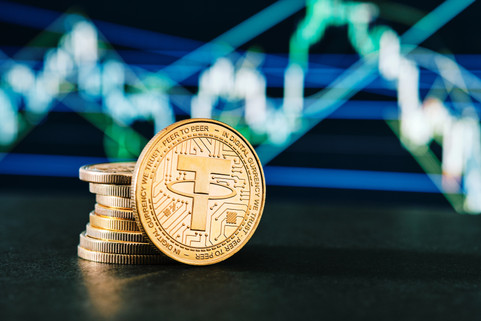Understanding De-Dollarization and Its Impact on Stablecoins
Most of the market-dominant stablecoins tether their value to the American dollar, but what potential risks could de-dollarization bring for stablecoin users?
Undeniably, the US dollar's once unassailable status as the world's reserve currency is slowly eroding. But what could this mean for the future of the stablecoin landscape if it were supplanted?
International Monetary Fund data shows that the US dollar's share of global foreign exchange reserves has dropped to just over 58%, a noticeable slide from the 71% it held in 2001.
Jeremy Allaire, the Chief Executive of USD Coin (USDC) issuer Circle, drew attention to this ongoing transition at the Consensus 2023 conference on April 26. He suggested that America needs to pass legislation on stablecoins and digitalize its dollar to stay competitive amidst the "aggressive de-dollarization occurring globally."
De-dollarization is the term for reducing the role of the US dollar in a nation's economy. Major economies, such as Russia and China, are actively pursuing de-dollarization, replacing the US dollar with digital currencies, other fiat currencies, or even potentially a shared BRICS currency among Brazil, Russia, India, China, and South Africa.
Signs of De-Dollarization and its Implications
This trend is already evident, with the Chinese yuan recently surpassing the US dollar as the most used currency for cross-border transactions in China. The yuan's use jumped to 48% of transactions, a stark contrast from nearly 0% in 2010.
Cryptocurrency enthusiasts might recognize a similar trend in El Salvador, the first country worldwide to legally accept Bitcoin (BTC) as currency in 2021.
With the recent announcement of cryptocurrency exchange Coinbase launching a derivatives exchange in Bermuda, some cryptocurrency advocates like venture capitalist David Sacks have suggested that the U.S. may be intentionally pushing crypto companies offshore. They believe this is due to fear of cryptocurrency further eroding the U.S. dollar's dominance.
Dr. Joachim Schwerin, the European Commission's principal economist, adding:
“Since we have records on financial data, the role of globally leading currency has changed every 80 to 110 years. Times of accelerated global frictions that significantly affect trade patterns vastly accelerate such changes.”
Impact on the Global Economy
Ray Dalio, a well-known billionaire investor, suggests in his video "Principles for Dealing with the Changing World Order" that possessing the leading reserve currency is a major factor in becoming the wealthiest and most influential empire.
One of the principal advantages of having a dominant reserve currency is the increased global demand it experiences relative to other currencies. This increased demand theoretically makes the US dollar more valuable, making it cheaper to import goods and services, and allowing the US to borrow funds at lower costs.
A Time of Innovation for the Stablecoin Market
All stablecoins with a market capitalization over $1 billion are pegged to the US dollar, a logical choice considering its prominent status.
However, as the US dollar's dominance continues to fade, these stablecoins could experience a decrease in usage. Nevertheless, even if the influence of the US dollar and stablecoins tied to it diminish, alternatives will likely emerge.

There's no certainty about what will work best, but there's an optimistic belief within the crypto community that quick and innovative solutions will be found. Tether has always been an innovator and has already introduced products like Tether Gold (XAUT) - a gold-backed stablecoin, as well as other fiat-backed stablecoins.
The design of stablecoins can vary significantly, but the most widely used are fully or over-collateralized and backed by external assets. As long as there's sufficient collateral, stablecoin users shouldn't worry that a transition from US-pegged stablecoins will lead to liquidity issues, especially when a large portion of the collateral is highly liquid assets.




